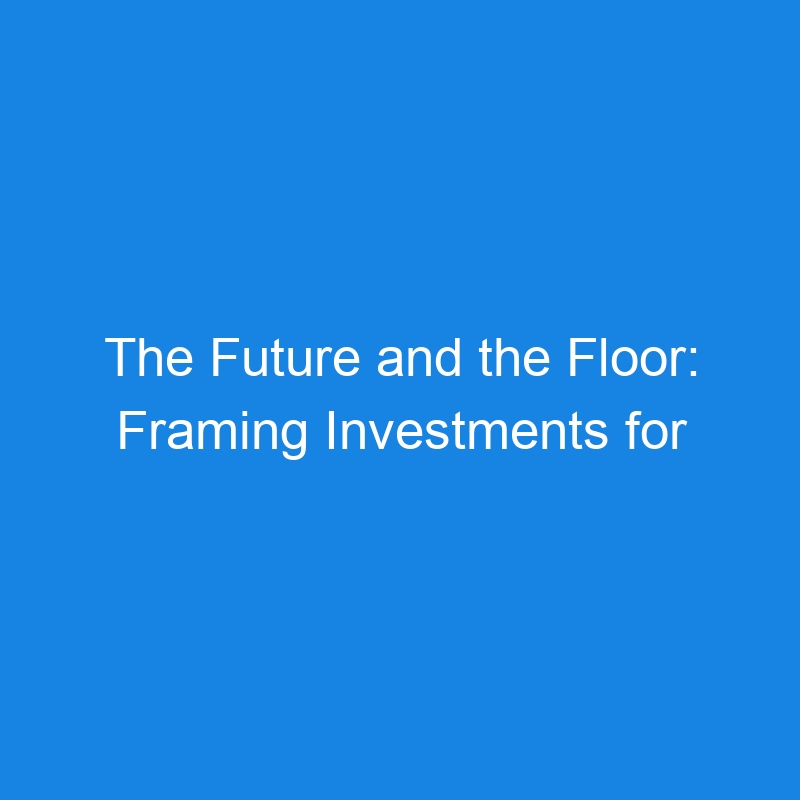
In any given year, there are a limited number of investments that a team can make, and it can be daunting to choose the “right” ones. In R&D, there is always more to do. There is always more to research, design, build, fix, maintain and improve. Spread across various domains, the possibilities multiply: We’re spoiled for choice, and, while inspiring, the breadth of possible investment areas can be overwhelming.
To simplify the options, I keep coming back to “the future” and “the floor.” At an overarching level, we want to deliver new value as quickly as possible (the future) while maintaining a positive user experience for our existing product lines (the floor).
Here are some tips for cutting your decision tree down to size and streamlining your messaging by defining your future and floor.
Identifying the Future(s)
To define your team’s future, reflect on where your company is trying to go:
- What does the ideal company future look like? Presumably, the company is trying to grow — so what drives growth at your business? If you’re at a B2B Software-as-a-Service (SaaS) company, odds are high that your company wants to increase its customer base (especially of large, enterprise customers) and upsell to existing customers.
- Within your team, what are the core domains and user flows that you own? How do those map up to company growth drivers?
- Review your potential investments through the lens of these drivers: What work could your team do to push for positive growth in these areas?
- Of those possibilities, which is likely to have the most significant impact on growth and positive outcomes in the future?
Once your possible futures are arrayed, compare and stack-rank investments in those areas against organizational goals. For example, “This quarter we want to focus on winning more customers by demonstrating value early.”
This future/floor framing creates a world of possibility and the tools to evaluate each possible investment. Ask questions like, ”Is this investment area the one that will best demonstrate value early? Relative to what else in our portfolio? And organizationally?”
Identifying the Floor(s)
To define your team’s floor, identify the minimum respectable user experience (MRX) for each of your core domains and user flows. To do so, you’ll need to align with your stakeholders on reasonable levels of polish and performance. Consider:
- Of your team’s core domains and user flows, what are the critical happy paths? What are the most important user paths through the system?
- What level of inbound support tickets are reasonable for your support team to fix?
- What signals do you have to pull on?
- What service-level objectives (SLOs) need to be maintained?
Here’s an example of how an R&D team at an observability provider like Honeycomb might define an MRX:
- Nice to have: Making a new SLO. (This functionality could break for a while, and it would be embarrassing for us and annoying to customers, but it would not hurt existing SLOs configured by customers.)
- Need to have: Functional alerting for customers on their own systems. (If this feature broke, our customers would lose visibility into their systems.)
Consider this rule of thumb: An engineering team can reasonably support as many tracks of work as the number of engineers on the team divided by two, rounded down.
Bring Everything Back to the Future and the Floor
Once you have your future and floor definitions in place, use them as your guide. You should be pushing toward the future while maintaining the floor.
Use the future/floor framing to evaluate each possible investment by asking:
- Is this investment area the one that will best move the needle on the future?
- Relative to what else in our portfolio?
- And organizationally?
- Is this investment necessary to maintain the floor?
- If so, why?
Reassuringly Repetitive
At its core, the future/the floor framing is similar to the idea of pairing indicators that former Intel CEO Andy Grove promoted in “High Output Management.”
As Grove described, to ensure the best possible outcome, pair two metrics that are in tension with each other. A “speed” indicator without a “quality” indicator will result in product sadness. A “quality” indicator without a “speed” companion may never show much progress.
Ultimately, an R&D organization tries to build new value as quickly as possible, and there must always be some degree of underpinning quality. It’s not quite a universal law, but it’s permanent enough to bring me familiar comfort. Always.
The post The Future and the Floor: Framing Investments for Growth appeared first on The New Stack.
